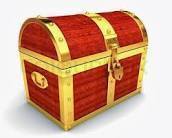Saint Thomas & Prince Island

Here is the complete financial historical report of São Tomé and Príncipe, in International English, as requested:
Financial Historical Report of São Tomé and Príncipe
Basic Data
-
Country ISO Code: ST / STP
-
Official Language: Portuguese
-
Language ISO Code: pt
-
Current Official Currency: Dobra (New Dobra)
-
Currency ISO Code: STN
-
Issuing Authority: Central Bank of São Tomé and Príncipe
-
Subdivision: 1 dobra = 100 cents
Currency History
1. Early Coins (19th Century)
-
The earliest primitive coins for the islands were minted in Brazil in 1813 and 1815, marking the beginning of local numismatics.
-
During the colonial period, Portuguese coins, especially the Portuguese escudo, circulated.
2. Santomean Escudo (until 1977)
-
Until independence, São Tomé and Príncipe used the Portuguese escudo, locally adapted as the Santomean escudo.
-
In 1975, shortly before independence, a symbolic nationalization of the currency occurred by overprinting notes of the Banco Nacional Ultramarino.
-
The Santomean escudo remained official until 1977, despite currency shortages.
3. First Dobra (STD) – Introduced in 1977
-
The dobra was officially created in 1977, replacing the Santomean escudo at par (1:1).
-
The name “dobra” refers to an old local coin minted in the 18th century.
-
Initial coins included 50 centimos, 1, 2, 5, 10, and 20 dobras, made of bronze and cupronickel, featuring local food, flora, and fauna.
-
In 1990, 50-dobra coins in nickel-plated steel were introduced, depicting wildlife themes.
-
In 1997, a new series of larger denominations (100, 250, 500, 1000, and 2000 dobras) was issued with varied shapes and local fauna motifs.
-
Banknotes were issued in denominations such as 5, 10, 20, 50, 100, and 200 dobras.
4. Dobra Redenomination (2018) – New Dobra (STN)
-
In 2018, due to chronic inflation, the dobra was redenominated at 1000 old dobras = 1 new dobra.
-
The new ISO code became STN.
-
Since 2010, the dobra has been pegged to the euro at a fixed rate of 1 EUR = 24.5 STN, under an agreement with Portugal.
-
The Central Bank issues new coins and banknotes to facilitate transactions and strengthen the economy.
Coins and Banknotes Details
| Type | Denominations | Material / Features |
|---|---|---|
| Coins (1977–present) | 50 centimos, 1, 2, 5, 10, 20, 50 dobras; 100, 250, 500, 1000, 2000 dobras (1997) | Bronze, cupronickel, nickel-plated steel; local flora, fauna, and food themes |
| Banknotes (1977–present) | 5, 10, 20, 50, 100, 200 dobras (first series); new denominations after redenomination | Paper notes featuring national symbols, cultural and natural imagery |
Economic and Historical Context
-
The creation of the dobra marked monetary sovereignty after independence in 1975.
-
Chronic inflation led to the 2018 redenomination to simplify the monetary system.
-
The peg to the euro strengthened exchange rate stability and facilitated international trade.
-
The country’s economy is based on agriculture, fishing, and tourism, reflected in currency themes.
-
The Central Bank of São Tomé and Príncipe is responsible for currency issuance, regulation, and control.
Curiosities
-
The dobra’s name has historical roots, referring to an 18th-century coin.
-
Commemorative coins and special series have been issued, highlighting local fauna and flora.
-
Older coins remain legal tender but are rarely seen in circulation due to inflation.
Current Status
-
The official currency in circulation is the new dobra (STN), with a 1000:1 conversion from the old dobra (STD).
-
The new dobra is pegged to the euro at a fixed rate, providing exchange rate stability.
-
Modern coins and banknotes circulate widely, facilitating economic transactions.
This report provides a comprehensive overview of São Tomé and Príncipe’s monetary evolution, highlighting key historical milestones, currency features, and the current economic context.
 Nilton Romani
Nilton Romani
